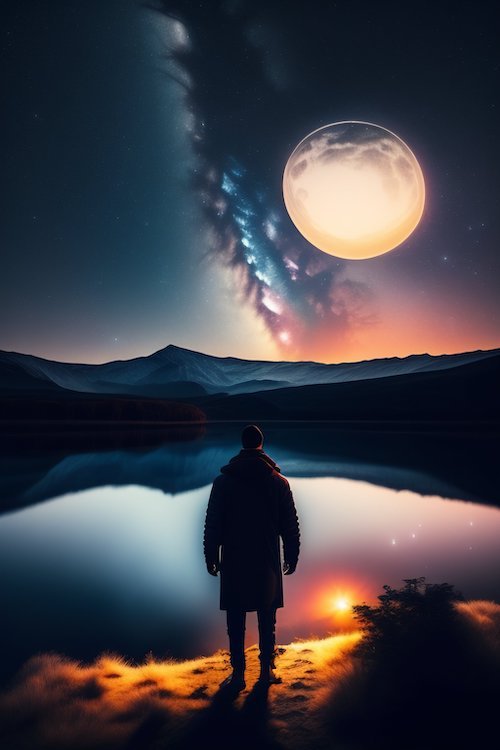The Buck Moon, also known as the July Full Moon, is a captivating lunar event that occurs during the month of July. It derives its name from the Native American tradition of associating full moons with specific events or natural phenomena. The July full Moon is set to ascend on Monday, July 3rd, 2023.

The Origin the term “Buck Moon”
The term “Buck Moon” finds its roots in Native American folklore, particularly from the Algonquin tribes. These tribes named each full moon based on the occurrences in their natural surroundings. For them, the Buck Moon signifies the period when male deer, commonly referred to as bucks, undergo the growth of their antlers in preparation for the forthcoming mating season.
Astronomical Phenomenon
From an astronomical perspective, the Buck Moon signifies a specific phase in the moon’s monthly cycle. It occurs when the moon is fully illuminated by the Sun, appearing as a radiant sphere in the night sky. This celestial phenomenon is a result of the moon’s position in its orbit around the Earth.
Cultural and Mythological Connections
Besides Native American folklore, the Buck Moon holds cultural significance in various mythologies and traditions worldwide. Different cultures have assigned unique meanings to the full moon, including rituals, celebrations, and beliefs associated with its energy.
The Buck Moon and Lunar Calendars
The Buck Moon played a crucial role in traditional lunar calendars, guiding agricultural practices, religious festivals, and daily life. Its appearance marked important milestones in the yearly cycle, providing a celestial calendar for various activities.
Supermoon
The July Full Moon 2023 is the first SuperMoon of 2023.
A supermoon is a term used to describe a full moon that appears larger and brighter than usual in the night sky. This phenomenon occurs when the moon is at its closest point to Earth in its elliptical orbit, known as perigee. During perigee, the moon can be about 14% closer to Earth compared to its farthest point, known as apogee.
Observing a supermoon allows us to appreciate the marvels of celestial mechanics and the intricate dance between Earth and its lunar companion.
The term “supermoon” was coined by astrologer Richard Nolle in 1979 and has gained popularity over the years.
Best Places for Viewing the July Full Moon
To enhance your experience of the July Full Moon, consider exploring destinations that offer unobstructed panoramas of the night sky. Here are some prime locations for observing the celestial spectacle:
- Coastal Regions: Sandy beaches or lofty cliffs along coastlines provide expansive vistas of the horizon, affording you the opportunity to witness the moonrise and its subsequent ascent.
- Mountainous Areas: Elevated locations secluded from light pollution offer pristine skies and a breathtaking backdrop for immersing yourself in the celestial event.
- National Parks and Nature Reserves: Preserved areas with minimal artificial light interference create an idyllic setting for fully immersing yourself in the captivating allure of the July Buck Supermoon.
Upcoming SuperMoons in 2023
The next two SuperMoons will occur on August 1,2023 and August 31, 2023. The final supermoon of 2023 is set to rise on September 29.
Conclusion
In conclusion, the Buck Moon, also known as the July Full Moon, is a captivating celestial event that holds significance in various cultures and traditions around the world. Its name originates from the time when male deer, or bucks, grow their antlers in preparation for the mating season. In 2023, the Buck Moon will illuminate the night sky with its radiant glow, captivating observers with its awe-inspiring beauty.
During this time, the Buck Moon will coincide with a supermoon, appearing larger and brighter than usual. This phenomenon occurs when the Moon’s elliptical orbit brings it closest to Earth, enhancing its visual impact. It offers a wonderful opportunity for stargazers and moon enthusiasts to witness the moon’s grandeur and immerse themselves in the wonders of the night sky.
To fully appreciate the Buck Moon, finding optimal locations with unobstructed views of the horizon, such as coastal areas, mountainous regions, or national parks, can enhance the experience. By escaping light pollution and embracing the tranquility of nature, observers can marvel at the majesty of the Buck Moon and its profound connection to the natural world.
